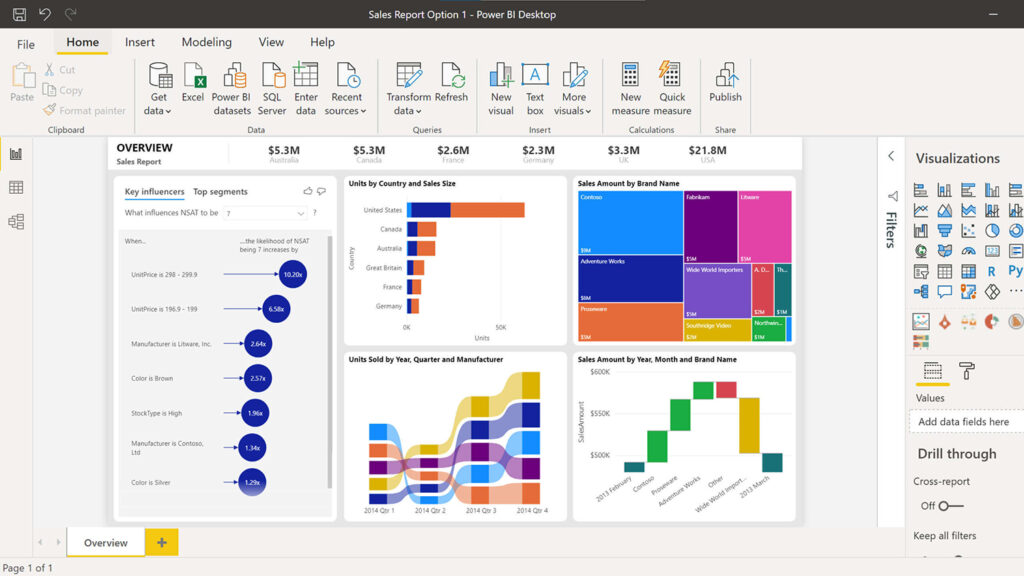THE most powerful tool for business insights on the market right now is a big part of Microsoft’s Power Platform: Power BI. With Power BI (which stands for “Business Insights”), you can leverage your data to easily build reports and dashboards with interactive visualizations. And, not just Dynamics data either – even Acumatica, QuickBooks, or old-school spreadsheet users can connect their data to Power BI and transform it into actionable insight. It can be used by an international conglomerate or a single individual; if you have data, Power BI can work with it.
What IS Power BI?
In case this is your first blog post about Power BI, Microsoft really said it best:
“Power BI is a collection of software services, apps, and connectors that work together to turn your unrelated sources of data into coherent, visually immersive, and interactive insights. Your data may be an Excel spreadsheet, or a collection of cloud-based and on-premises hybrid data warehouses. Power BI lets you easily connect to your data sources, visualize and discover what’s important, and share that with anyone or everyone you want.”
So our Dynamics GP folks don’t have to rely on Management Reporter, Crystal Reports, or SRS, Acumatica doesn’t have to rely solely on ARM, and so on. Power BI would allow you to connect anything and everything into one intuitive, easy-to-understand place.
Microsoft actually breaks Power BI into three cooperative pieces: A Windows desktop application called Power BI Desktop, an online SaaS (Software as a Service) service called the Power BI service, and Power BI mobile apps for Windows, iOS, and Android devices.
Power BI Benefits
There are several different licensing options for Power BI (a blog on that will be published in the coming weeks so be sure to subscribe!) but there are several benefits that any user will see. Power BI is:
Intuitive
A tool you cannot use is worthless, no matter what potential it has. Power BI is an incredibly intuitive tool with a very shallow learning curve. And as always, Crestwood will have your back (we’re working on videos and blogs), and Microsoft Docs has information about Power BI available to get you started.

Consolidated
Power BI connects all your data, with little to no switching between programs. Users are able to link unlimited datasets and ask Power BI questions about any of it to yield powerful insight. This does not impact the underlying dataset or the original shared content (dashboards, reports, and apps) so feel free to get wild!
Secure
With Power BI, administrators can classify and label sensitive Power BI data, enforce governance policies (even when Power BI content is exported to Excel, PowerPoint, PDF, etc.), and monitor and protect user activity. This ensures that your data is secure.
Visual
Data that is not easy to understand is worthless for decision-makers. Power BI has a plethora of various visualization styles to choose from, so your reports can be beautiful as well as functional.
Cost-Effective
Power BI is cost-effective. Basic is free, and Pro licenses are very low-cost per user. Microsoft Docs also has you covered on the various Power BI licensing options.
If you have questions or need some assistance, visit our support page for more help.
